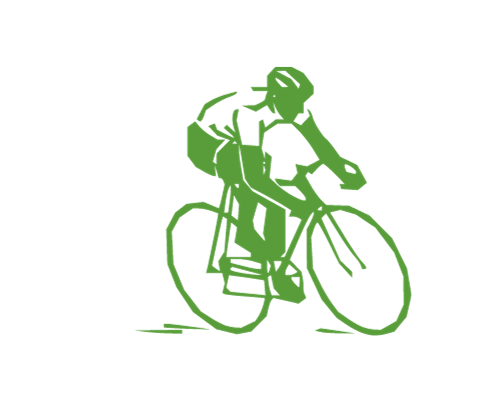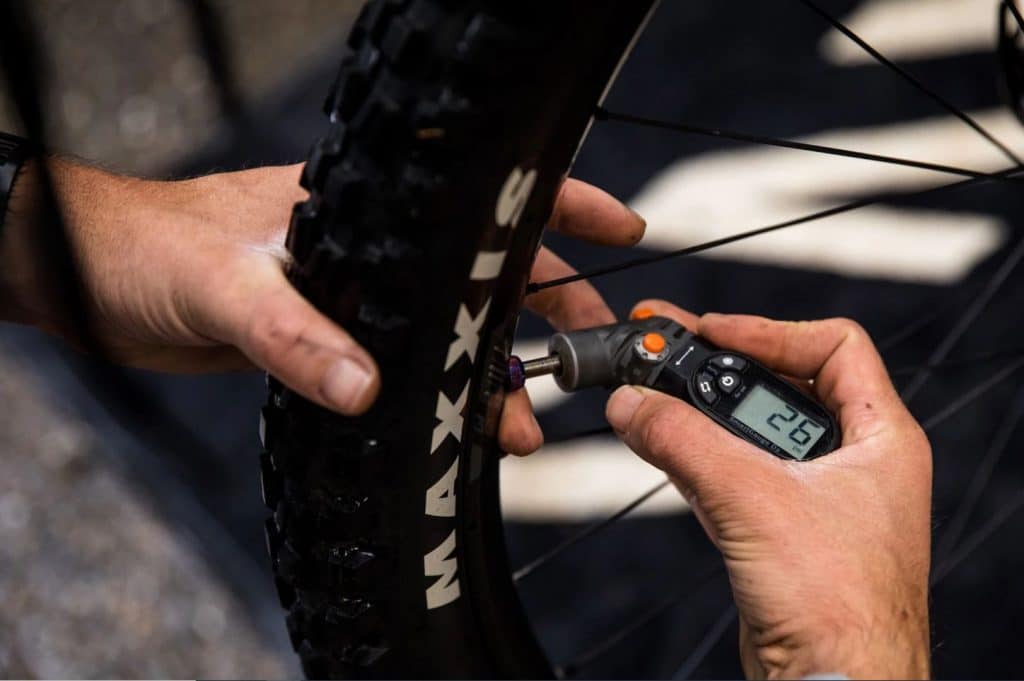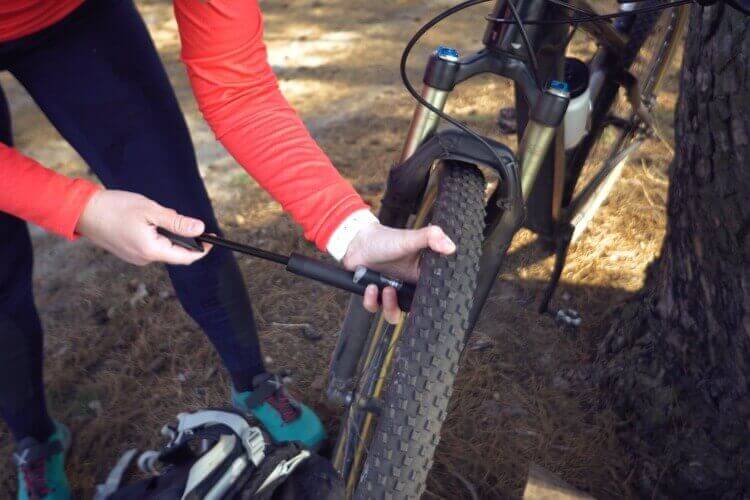
No matter what type of electric bike you use, a mountain bike or a model for leisurely riding, there is a model for each type. To keep your bike running smoothly and for a long time, you need to make sure that it is properly cared for. But how do you keep your electric bike safe and sound all year round?
It doesn’t take much effort to take care of your bike. The smart thing to do is to start pumping the tires. Paying extra attention to your electric bike’s wheels in excellent condition will not only keep you from getting stuck in an awkward situation on the road with a flat tire. Still, it will also prevent accidents and large financial expenditures later on.
Every cyclist should know how to take care of their safety on the road. Only the right tire pressure will give you the safety you need. But what is a good e-bike tire pressure? Let’s get to the bottom of it.
What does the tire pressure level depend on
The exact tire pressure a cyclist uses depends on his or her riding style. Ask yourself the following questions: what is your riding style, how strong are your tires, what is your comfort level, is there no shaking when hitting rocks and obstacles, do you feel the possibility of a puncture, are you satisfied with your grip?
Once you’ve tested your new e-bike in a few rides, you’ll be able to find your ideal tire pressure.
When driving on a flat surface without defects, it is better to drive with a higher tire pressure. This is due to less rolling resistance.
Specific models of electric bikes with extremely narrow tires have a required pressure of 120 psi. For this reason, most e-bike owners want to ride with high tire pressure. But it is worth it because the recommended tire pressure does not consider the rider’s weight or the type of terrain on which they are riding. The heavier the rider’s weight and the luggage, the more e-bike tire pressure is needed for optimal performance. Low tire pressure is recommended in rainy weather because it achieves better traction by reducing rolling resistance. Ebike tires also have excellent cushioning, allowing for a smoother ride.
Varieties of electric bikes
The model of the bike you ride is another key factor in determining bike tire pressure.
Road bike
Pump your tires to the correct tire pressure for a smooth road surface. With small rocks and other imperfections on the road, you can always enjoy a great ride, even if you inflate your tires to 80-130 psi.
Of course, higher tire pressures reduce traction and you’ll have to exert significant effort to maintain your balance.
When driving off-road, the ground becomes loose, which implies more traction. To adapt and optimize the speed simultaneously, you should use a lower pressure of between 40-70 psi.
Mountain electric bike
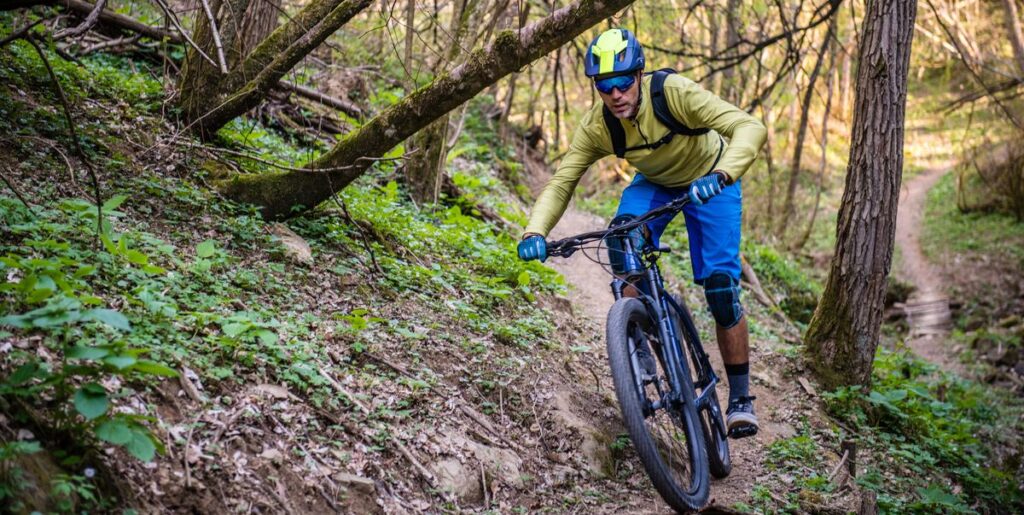
Higher tire pressures are not recommended for rough terrain and rocky areas. You should also be aware that high tire pressure reduces traction and can contribute to accidents. That’s why it’s vital to keep the lower pressure between 25-50 psi in these terrains. Remember that the pressure should be such that the cyclist is as comfortable as possible and at the same time can provide the best grip on the ground. Also, do not allow the electric bike tire pressure to be too low to avoid punctures from rocks and other road objects.
Mountain biking also differs in the pressure levels of the rear and front tires. It would be best if you used the higher tire pressure in the back tire. This is because there is a greater load on the back tire. While the front wheel can be lifted when negotiating obstacles and is more mobile, this cannot be done with the rear wheel. Accordingly, it is subjected to increased loads and takes the full impact of a collision with stones, potholes, debris, and other obstacles on the road.
Experienced cyclists set the electric bike tire pressure in the back tire to 4 psi more than in the front tire of the bike.
Soft surface bike
The definition of “soft pavement” refers to snow, sand, and dirt, which require lower tire pressure. Thick tires are usually used.
Electric bikes fat tires
These are models of electric bikes that are equipped with fat tires. They are designed for riding on unstable roads, as well as on snow, mud, and sand. Lower pressure is recommended for wide tires. Purchasing an accurate pressure gauge will help you calculate the correct e-bike tire pressure to drive on any surface.
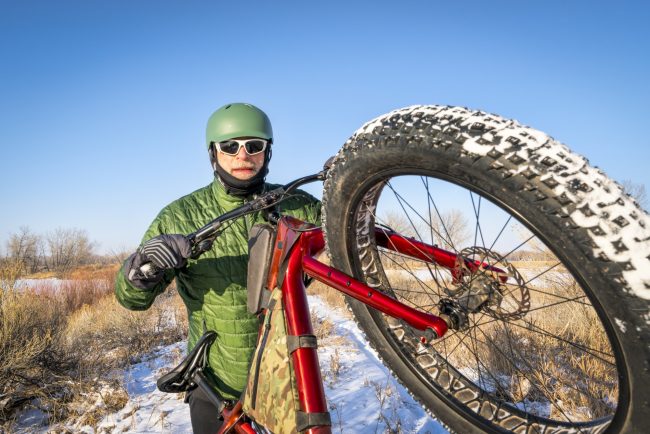
Unless you are moving on difficult roads with serious obstacles, thick tires should not be hard. The bike tire should be so soft that you can easily squeeze it without effort.
Thick tires are ideal for conditions where good traction is required. This is the type of e-bike tire often found on electric bikes. They provide comfort and convenience.
Also, if your e-bike is equipped with thick tires, you should consider the type of tires. They can be tubeless tires or tubular tires. Tubed tires have a minimal contact area and assume a higher pressure than tubeless tires. If your bike has tubular tires, you should inflate them a couple of pounds more.
Tubeless tires are often included in addition to bicycle models with thick tires. They provide more performance and speed, and they also prevent the risk of a flat tire.
Front and Rear Tire Pressure
Electric bike owners tend to use different tire pressures in the front and rear tires.
The trick is to keep the front tire pressure low and the rear tire pressure higher. This point is very important if you are carrying heavy luggage with you.
You should inflate both tires to medium pressure before putting them on your e-bike. If you feel that the preset pressure level is appropriate, you can easily make subsequent adjustments for a smoother ride.
Generally, manufacturers recommend front and rear tire pressures, so be sure to read the manual.
How do I inflate the tires on my electric bike?
To inflate your tires, follow these steps:
- Open the dust cap that covers the valve;
2. Connect the air pump to the valve;
3. Inflate the e-bike tire pressure by pushing up and down on the handle until the desired effect is achieved;
4. Remove the pump from the valve and screw on the dust cap.
It is not difficult to inflate e-bike tires. It is done in the same way as a traditional bicycle tire.
There are three types of pumps that are used to inflate the tires of a bike: floor pumps, CO2 pumps, and hand pumps.
For everyday use, it is better to use a floor pump. A CO2 tank or a hand-type pump will be relevant if you have driven far away and have no other choice. A hand pump is a good alternative, but the inflation process is much more time-consuming than with a floor-type pump.
The process of inflating e-bike tires varies depending on which valves are used in the tires, Schrader or Presta.
What’s the difference? The Presta is the more popular option. These valves have a better length and are thinner. Schrader is the same valves you see on cars. They are much shorter and thicker. There is also another type of valve, the Dunlop, but it is rarely seen.
What is the difference in the process? For Presta valves, you have to unscrew the locknut along with unscrewing the dust cap. Once the process is complete, tighten the locknut before putting on the special cap.
It is essential that you know which valve system your bike is equipped with. You cannot use a Schrader pump on a bike with a Presta system and vice versa.
Fortunately, dual nozzles with interchangeable heads have been created that can pump both Presta and Schrader tires.
You do not need separate pumps if you own multiple bikes with different valves. Just buy one pump with a double nozzle. You can also buy adapters if you have a pump with the wrong nozzle.
Keep in mind that your wheels regularly deflate. Therefore, it is necessary to constantly inflate your tires to counteract this phenomenon and prevent flat tires.
Check the pressure level of your tires every day before you get on your bike. You do not have to use an e-bike tire pressure gauge to do this. Squeeze the tire by hand and check how you feel to see if it needs pumping. It takes you three seconds to do this, and you can avoid a lot of problems on the road, including accidents.
Instructions for inflating tires
Inflating the tires is not difficult. You should do the same thing you would do when inflating regular bicycle tires:
- First, make sure you have the right pump;
- The rear tire needs to be inflated a little more than the front tire. This will help distribute the weight evenly;
- Always check your tires before you go out for a bike ride;
- Switching from tubeless tires to well-inflated ones will help you prevent pinched tires;
- Always carry a pump or CO2 bottle to keep your tires at the proper tire pressure.
- Always check the pressure level for your electric bike and stick to the manufacturer’s recommended values. This information is available on the side of the tire.
Rolling resistance
The rolling resistance of a tire is the force that is transferred to the tire from the vehicle to move at a constant speed on the road. It is the force that is needed for the tires to move
Effect of tire pressure on rolling resistance
With low tire pressure on electric bikes, the rolling resistance will be much higher. But we are only talking about a few watts of power.
Tire pressure provides minimal impact on this value, taking into account gravity and wind resistance. However, a higher-pressure setting can have a greater impact when planning a long ride.
The variety of tires used also provides a large impact on rolling resistance. Mountain bike tires are used for better traction, so they have the highest rolling resistance. In addition, road tires are used for riding on level roads, such as sidewalks, so they have the lowest rolling resistance.
Weather conditions
The weather also affects the tire pressure level of your electric bike.
When it’s raining outside, you need to lower tire pressure.
Cold weather also requires low tire pressure. Keep safety in mind and reduce the pressure.
The weight of the rider and the load
The heavier the weight carried, the higher the tire pressure level. As the load on the vehicle increases, so should the pressure. Be sure to consider this when riding your bicycle with heavy luggage or a child.
The lighter your load, the lower the tire pressure should be. If you naturally have a small package and a thin build, then it is contraindicated for you to ride at the highest possible tire pressure. Stick to low pressure and then you will have an easy ride on your electric bike.
Risks of flat tires
A smooth ride on an electric bike is of the utmost importance, then there is also a great chance of a flat tire. If your bike breaks down often, one of the key factors can be tire pressure.
If the pressure is too low, there is a greater chance of a flat. This often happens when the tire tube gets pinched by the rim. The problem is solved simply by maintaining higher tire pressure.
You don’t want to exceed the recommended tire pressure. If you do, you will get a few extra miles, but you run the risk of a punctured tire.
Check the proper tire pressure
Inflate the tire to the correct values and ride your electric bike. Feel how comfortable you are riding it. If you ride on a familiar route, it will give you better control of your bike.
If you feel uncomfortable riding, try to reduce the pressure a little. If you feel that the rim is hitting the tire, you should increase the tire pressure.
Once you have returned from a test ride, you can adjust the tire pressure level until you reach the ideal tire pressure that is fully consistent with your needs.
Check the tire pressure regularly
No matter what tires you drive on, sooner or later they start to deflate. Most of the air comes out with severe temperature stresses, so it’s important to check your tire pressure levels.
It’s best to do this before each trip. You should also inflate your tires every time, using the same pump. This is because different pumps are very different from each other.
Adjust the tire pressure to your riding style
Tires can’t be inflated once and forgotten. Higher pressure means lower rolling resistance. There are no perfect roads, so you’ll need to experiment to find the perfect pressure for your riding style and your bike.
Over-inflated tires have several consequences for the electric bike owner, including loss of pace, change in traction, traction, and cyclist confidence when riding. On new pavement, each tire can have excellent traction and grip at 70 psi, but on rough pavement, they can provide a faster ride at 60 psi.
If you like to ride on trails, you should keep in mind that even though your electric bike moves smoothly and has better traction at low pressure, the level of grip is much better when you’re navigating uphill terrain.
It’s also worth controlling so that you don’t use your bike for rides for which it is not intended. For example, road-type bikes are lighter and more aerodynamic, which provides easier traction on a flat road surface. This is why this type of tire is not used for cross-country use.
Regular riding of an electric bike on rough roads will cause damage to the wheels and serious defects if they hit a curb or other obstacle at low pressure.
More information about caring for your electric bike tires
As you ride, watch out for other obstacles that can cause damage to your wheels. Hazards such as sticks, glass, and pieces of metal can all seriously damage rubber and lead to flat wheels.
Brake consistency is of the utmost importance in keeping the tire intact and unharmed. Do not allow the wheels to skid if you stop suddenly. Abrupt stopping can cause the wheels of your electric bike to fail much faster.
If you use a floor pump to pump your tires, you can additionally use a pressure gauge that measures psi. Some gauges measure the air pressure inside the wheel itself, not in the tire, so the accuracy of the values can vary greatly.
To learn more about Good E-Bike tire pressure check here.
Final Thoughts
There is no such thing as perfect tire pressure. Each type of bike has its best tire pressure and each cyclist adjusts it to his or her style of riding. In addition, tire pressure depends on the weather and the weight being carried.
In addition, you need to follow the recommendations of the manufacturer of a particular electric bike. Do not be lazy to find out what minimum and maximum tire pressure is recommended specifically for your model. That information is usually listed on the sidewall of the tire. With this data, you will have an idea of the optimal tire pressure for your electric bike.
It is better to stick to average values and adjust them depending on the situation and conditions. When going off-road, the pressure should be reduced, planning to go on a level surface, it is better to inflate the tires.
It is not superfluous to buy a quality e-bike tire pressure gauge, which will read the level of pressure in the tires. This tool will allow you to read the smallest changes down to half a pound and reduce the risk of an accident on the road.
FAQ
What pressure should electric bike tires be?
On average, the ideal tire pressure should be a minimum of 60-70 psi.
Also, tire pressure is directly related to the type of bike. For example, road tires require 80-130 psi, while mountain bike tires require only 25-35 psi.
Is 40 psi bike tire pressure good?
40 psi is a much lower tire pressure compared to the recommended norm. It is optimal for an electric hybrid bike.
How do I know what pressure my bike tires should be?
On the sidewall of your tire, there is information from the manufacturer on the recommended pressures. Adhere to the maximum pressure and minimum pressure recommended by manufacturers, but also consider the terrain in which you are traveling, your own weight and luggage, and the weather conditions.
